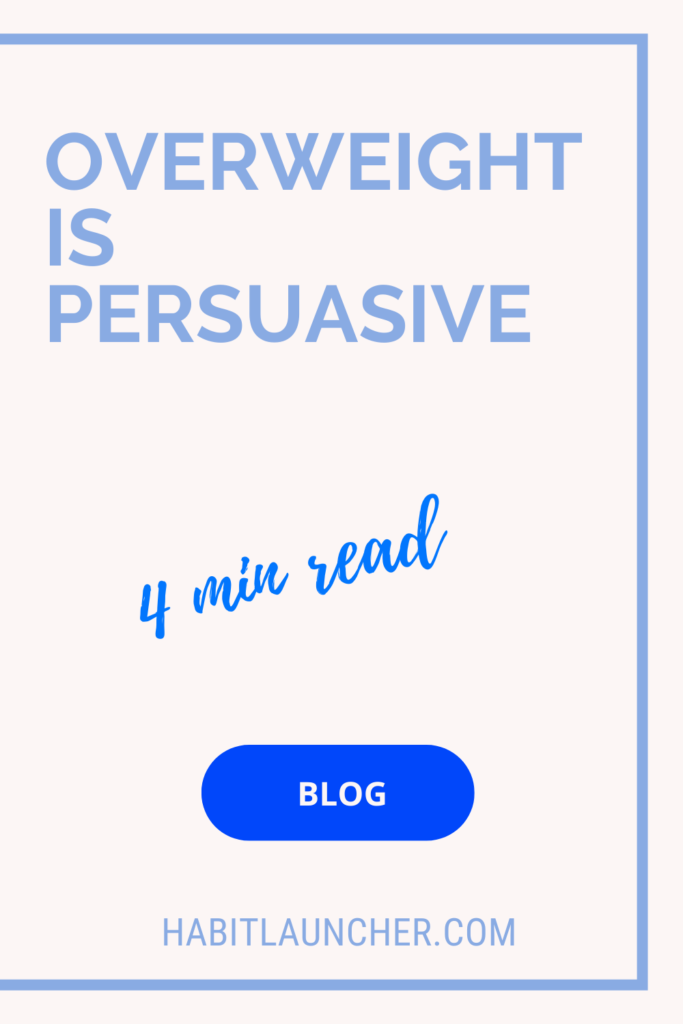
Why is obesity increasing? The numbers keep coming in and obesity continues its climb.
The latest numbers from the CDC are here. In 2017-2018 over 42% of adults in the U.S. had obesity, up from 39.6% in 2015-2016 two years earlier and up from 30.5% in 1999-2000.
In spite of all the efforts, no change in this generational trend.
Some hope the new dietary guidelines may help.
We hope too, but highly doubt it.
For persuasion, facts do not matter.
As a thought experiment, let’s consider why obesity is so persuasive, winning more adherents as time passes. Why is it seemingly winning a persuasion battle?
Robert Cialdini is a famous expert on influence and persuasion.
In his book, Influence: the psychology of persuasion, he cites six principles of persuasion: Reciprocity, Scarcity, Authority, Liking, Consistency, Social Proof.

Reciprocity works as we do not like to be in debt and owe something. A small gift leads us to reciprocate for example.
Scarcity plays on our fear of missing out. Hurry only 5 copies left in stock.
Authority appeals to our subconscious deference to forms of expertise. Medication administered while wearing a white blouse is more effective.
Liking influences us as we trust, and aim to emulate people we like.
Consistency is our tendency to avoid cognitive dissonance and act in accordance to who we believe to be. Once we commit to something, we seek to be consistent with our commitment and find ways to justify our decisions.
Social proof or consensus, explains we’re more likely to adopt a behavior we see has already been adopted by others around us.
These principles of persuasion influence our behaviors.
They are part of every marketer’s toolkit. Every brand uses them to influence our behaviors.
And as usual with bias, they keep working, even when we know they are at play.
When on a weight loss journey, we need to minimize the forces of influence of the obesogenic environment we live in.
Notice its influence and develop defense strategies to succumb less.
Looking at the list of principles of influence above, two are somewhat under our control and we have influence over.
Consistency
Once we commit and make a decision we seek ways to justify our actions and stay consistent.
In case of poor habits, say drinking sugary drinks on a regular basis, what does the consistency say about our commitment? What are we seeking to be consistent with?
Find out and change it.
To change, commit to the new habits you want to foster.
Affirmations such as “I am healthy”, “I drink water”, “I workout” are a form of commitment.
Implementation intentions such as “when it is Monday lunch time, I hit the gym” are also commitments we make with ourselves.
Commit to health, write it down. Formulate, affirm and visualize the person you are health wise to foster consistent action with these beliefs.
The belief then fosters consistent behaviors which reinforce the belief.
Whichever comes first (belief or behavior) does not really matter as long as consistency supports a good habit.
Social proof
The environment around us is a big influence and a source of clues to prompt weight impacting behaviors. Navigate it consciously.
This obviously includes interactions with other people as regards to food and dieting. If sugary drinks, pastry breaks, etc. surround us, mind the pounds.
New habits
Remove prompts, add friction to behaviors you want less of.
Add proper prompts and remove friction to make wished behaviors easier.
Integrate the new habits in your current routines.
Make it easy.
Easier than that is good too.
Remember, for persuasion, facts do not matter.
Convenience, sensory cues (smells, packaging), dopamine hits and the principles of persuasion keep us under influence. This is why overweight is so persuasive.
Change requires awareness and concrete strategies. A system made of habits that influence towards health.
To build your system for weight loss that lasts, see our e-book on new habits here. Also available on Gumroad here. It’s not free, but you’ll soon see it’s worth it.
